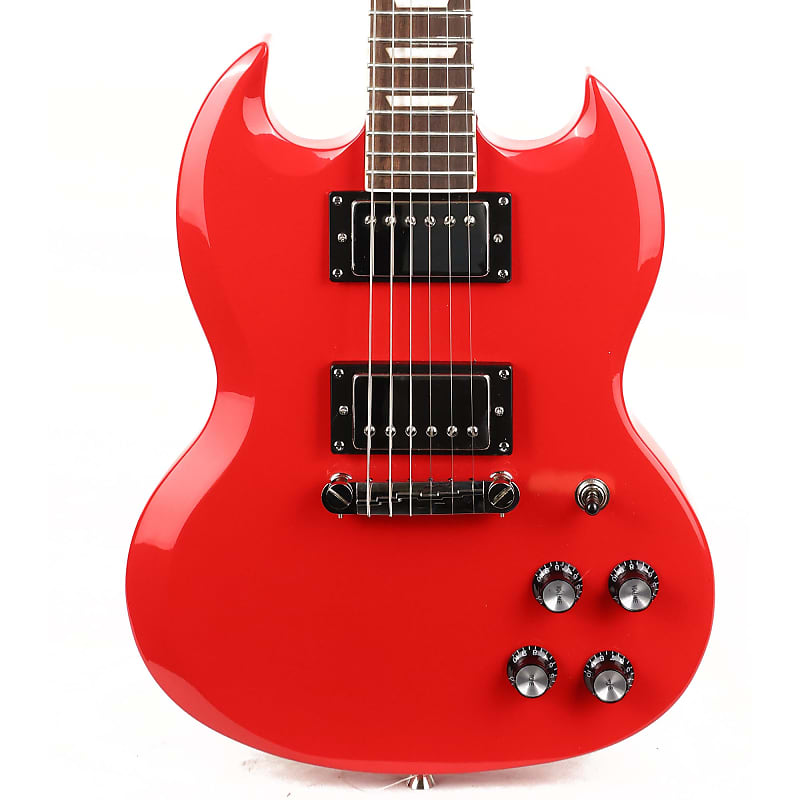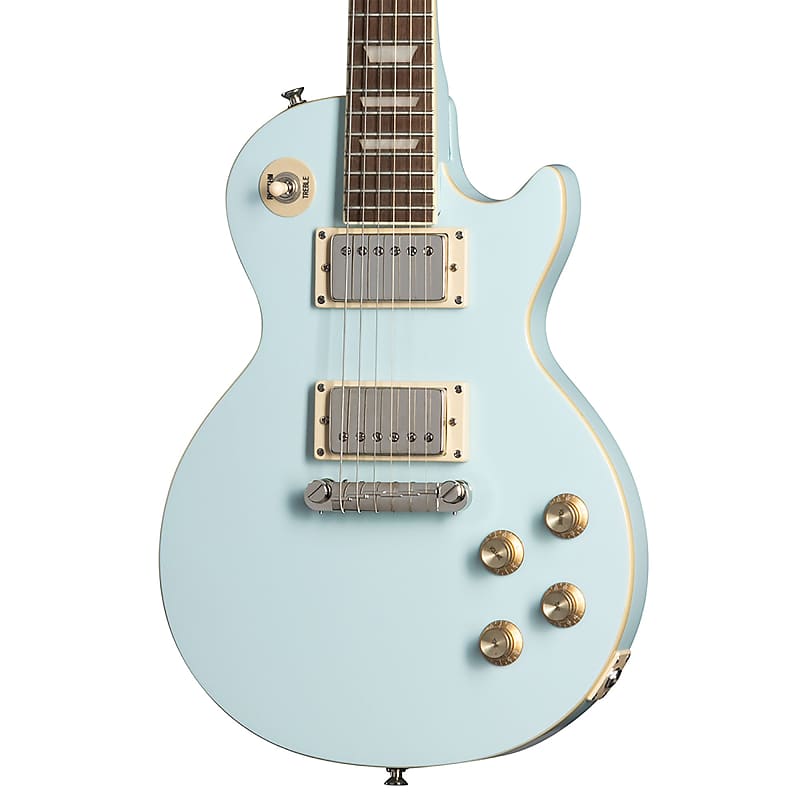Most of us have known or seen kids struggling to play an adult-sized guitar. Some of us were once those kids ourselves. But to a budding player, few things are as disheartening as failing to reach the frets or successfully make a chord.
And there are some persistent myths that some people (hi mom and dad) once peddled: like, young musicians should grow into larger instruments. But the heavy, high-action strings of an off-brand acoustic guitar do not necessarily build finger strength or character—more often than not, they just make kids hate practicing their instrument.
So, we are here today to offer an alternative path: To outfit beginners with right-sized guitars and great tools built for students.
Chances are, any young musician in your life would prefer an electric guitar to an acoustic. And they're in luck, because there are so many great beginner-friendly electrics being made today, and affordable amps that are better and cheaper than anything we had when we were growing up.
These are Epiphone Power Players, new, trimmed-down versions of Gibson's famous Les Paul and SG guitars. At about 3/4ths the size of a regular guitar, they're easy to play for children—and light to travel with for adults.
1. What music does your beginner want to play?
If you're buying a first guitar for a child, take stock of the type of music they want to play. If it's rock, pop, R&B, and other popular styles, you can't go wrong with beginner versions of the classics like Stratocasters, Telecasters, Les Pauls, and SGs.
Fender's Squier brand has many beginner-friendly guitars, modeled after Fender Strats and Teles from every era. Gibson's Epiphone brand has other beginner and budget-friendly models too, outside of the Power Players.
Epiphones are great because they often come with humbucker pickups—these large pickups here that have a wider sound. They lend themselves well to classic rock styles, blues, hard rock, and heavier music, but they can really work for anything.
Single-coil pickups are brighter sounding, and you'll find them on many Fender-style guitars, like the Squier Affinity Stratocaster and Squier Affinity Telecaster. These pickups are great all-arounders and are popular for rock, indie, emo, country, and plenty of others. Which brings us to the second point…
2. How long are they going to want to play that kind of music?
We know this can be a hard thing for any parent, guardian, or relative to judge. But take an educated guess about your beginner's musical interests. If they're the type of person to change their minds soon and often, then it's a good idea to stick to a classic design. It'll stay relevant no matter what.
But maybe you have a budding shredder on your hands, someone who wants to play nothing but metal riffs and fast licks. If you're confident they'll stick with that style, there are lots of great first electrics built specifically for players like them.
This includes Ibanez's Gio series, which puts that company's fast-playing designs into many affordable varieties—Mikro, full-sized, Deluxe, 7-string, and more). ESP LTD, Jackson, Kramer, Schecter, and Epiphone again all make beginner-friendly metal guitars too.
3. Should you buy used or new when buying your first guitar?
Everyone knows the merits of buying new: you get what you want and you can feel confident that no one else has banged it up. But buying a used guitar for a beginner makes a lot of financial sense.
It'll be less expensive than new. It'll hold its value, letting you or your beginner resell later on when they want to upgrade. And you can use the savings to invest in a setup.
Whatever you buy—used or new—it's a smart move to take the guitar to a shop for a setup. A setup is a standard bit of maintenance that will set you back another $50 or so. But it will make sure the guitar plays its best, is comfortable, and stays in tune up and down the neck.
If you're not sure what to ask for, just let them know you bought a new guitar for a beginner and would like a setup—they'll love to hear it, and will be able to take it from there.
Browse used guitars under $300.
4. What size guitar should you buy for a child?
We touched on this in the intro, but it's worth repeating: a guitar that is too big for a beginner is probably not something they'll grow into. It'll just be something they struggle to play, and maybe, unfortunately, something that winds up neglected in the corner of their room.
So, if your beginner is young or small-bodied, you should really consider getting a 3/4" or mini electric. These include the Epiphone Power Players series, but diminutive guitars from other brands too: the Squier Mini Stratocaster, Vox SDC-1, Ibanez Gio Mikro, Hofner CT series, and more.
For toddlers and very young children, take a look at Loog guitars—which come in small 6- and even smaller 3-string electrics and acoustics.
5. What amp or accessories do you need for a great beginner guitar rig?
To make music with an electric guitar, you'll also need an amplifier and at least one instrument cable to connect them. But don't worry, beginner amps today are dependable, feature-rich, and not very expensive at all.
The Boss Katana series has amps of all sizes, from the $99 Mini Katana on up. They all include digital effects—which will let your beginner begin to explore new sounds right of the gate and sound like their heroes sooner—and are used as practice amps by lots of adult players too.
Fender has a similar series of amps, the Mustangs, that are also built ruggedly and feature onboard effects. The Mustang LT25 is the smallest of the traditional combo amp style, but the Mustang Micro is a clip-on, personal headphone amp that's even smaller (or, for the household, quieter).
Another great option is the Positive Grid Spark 40 or Spark Minis. These amps give users the options to select many different amp tones and effects, and also sync up with bluetooth for easy lessons from phones or tablets.
Given all of these options—if you're of a generation that grew up with tinny, questionably grounded practice amps—you can't help but be happy for this new generation of players.


